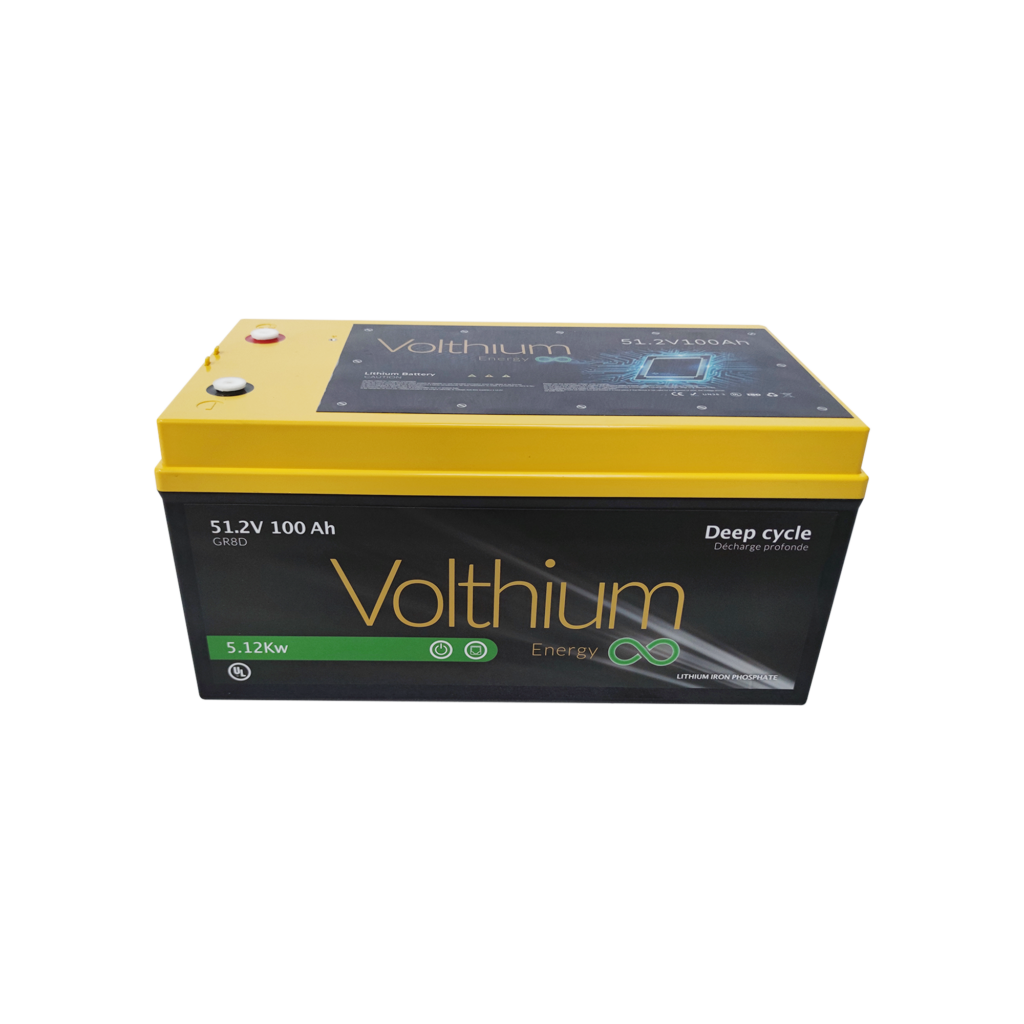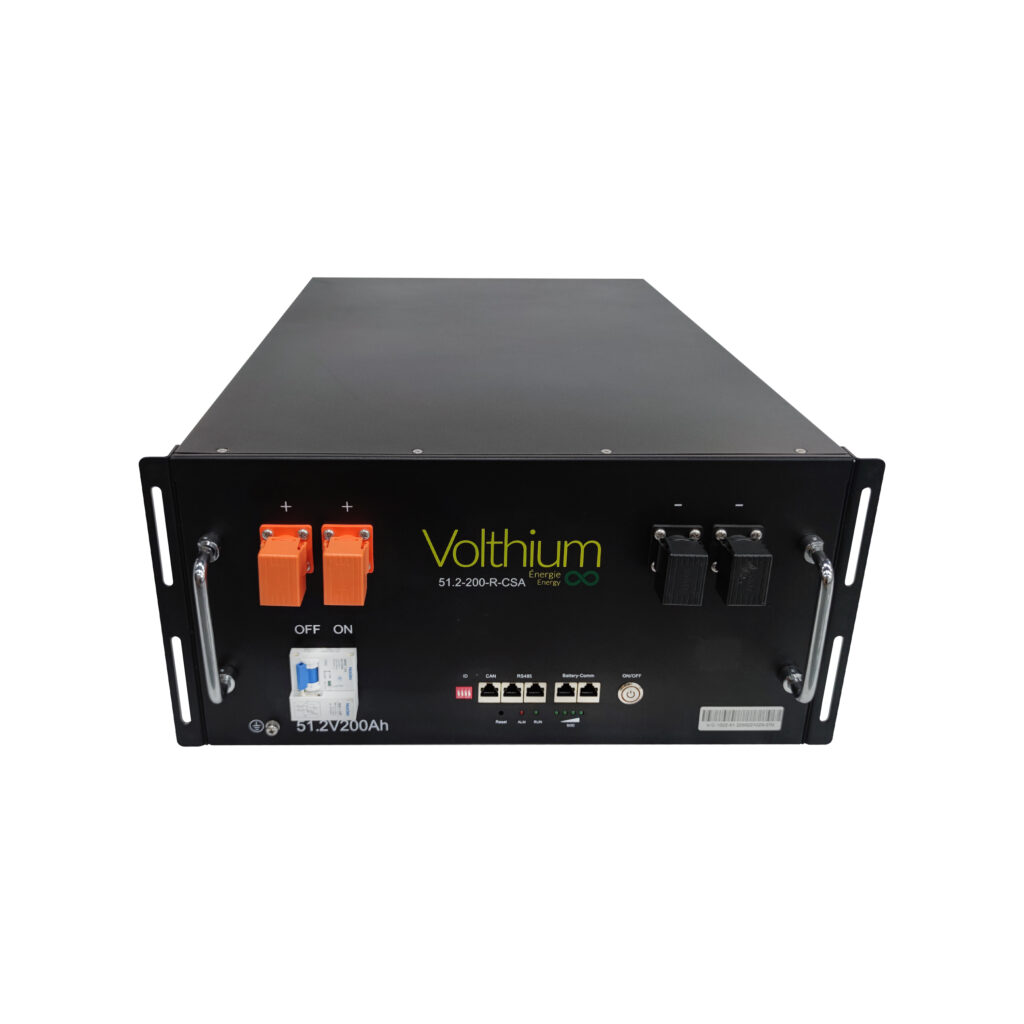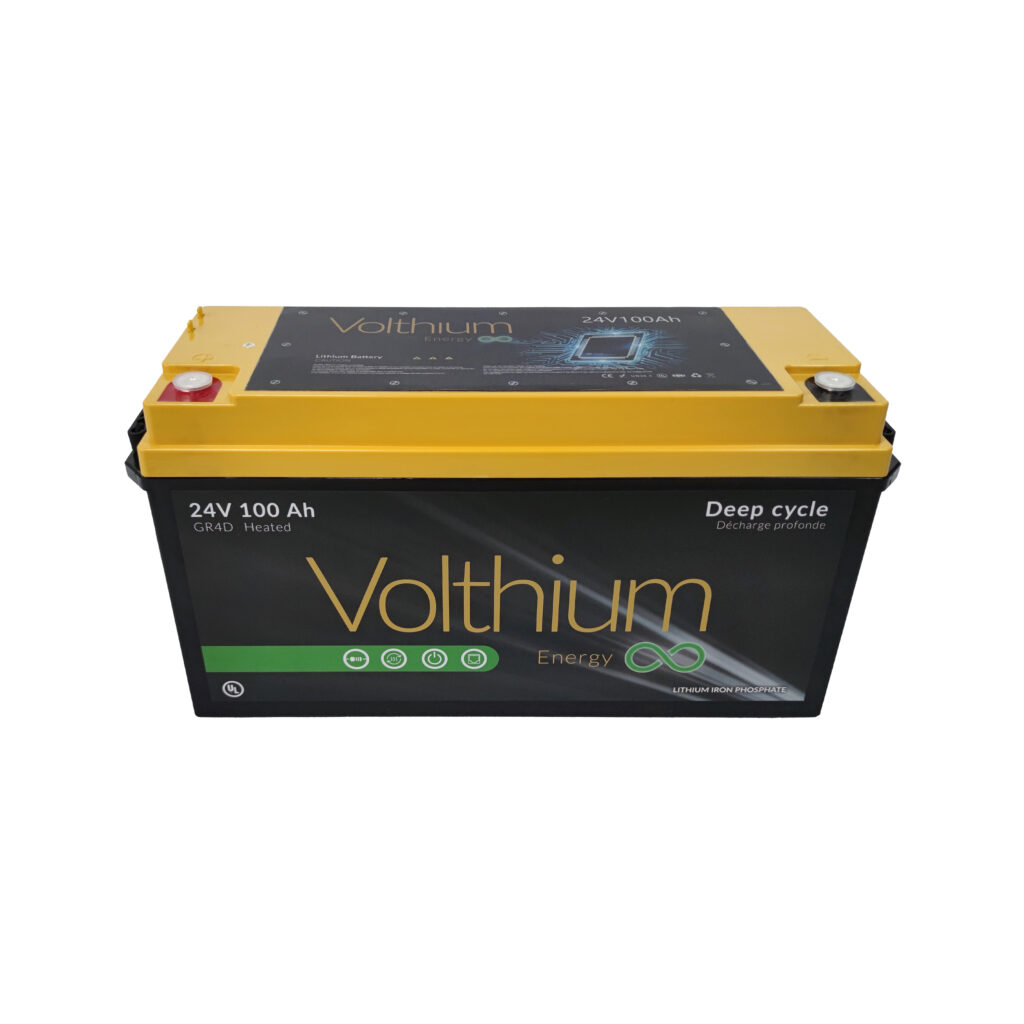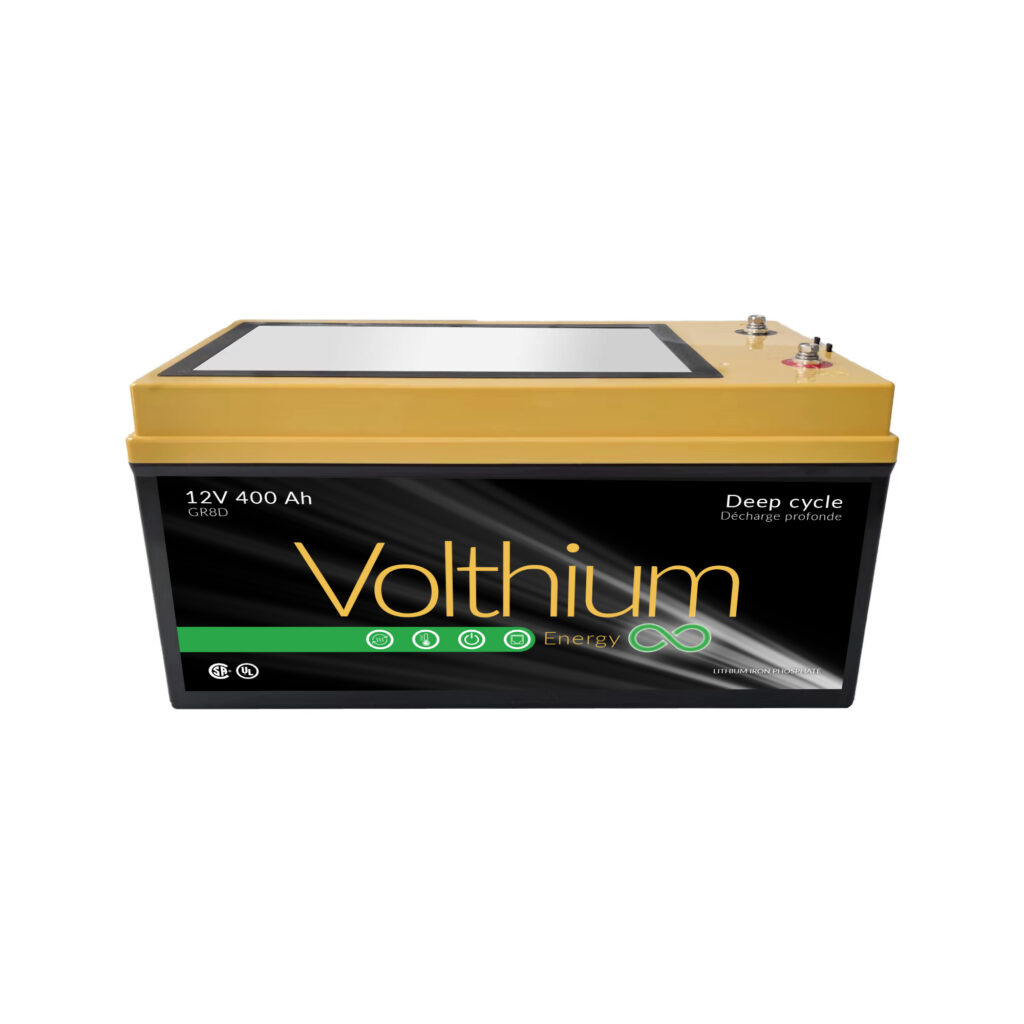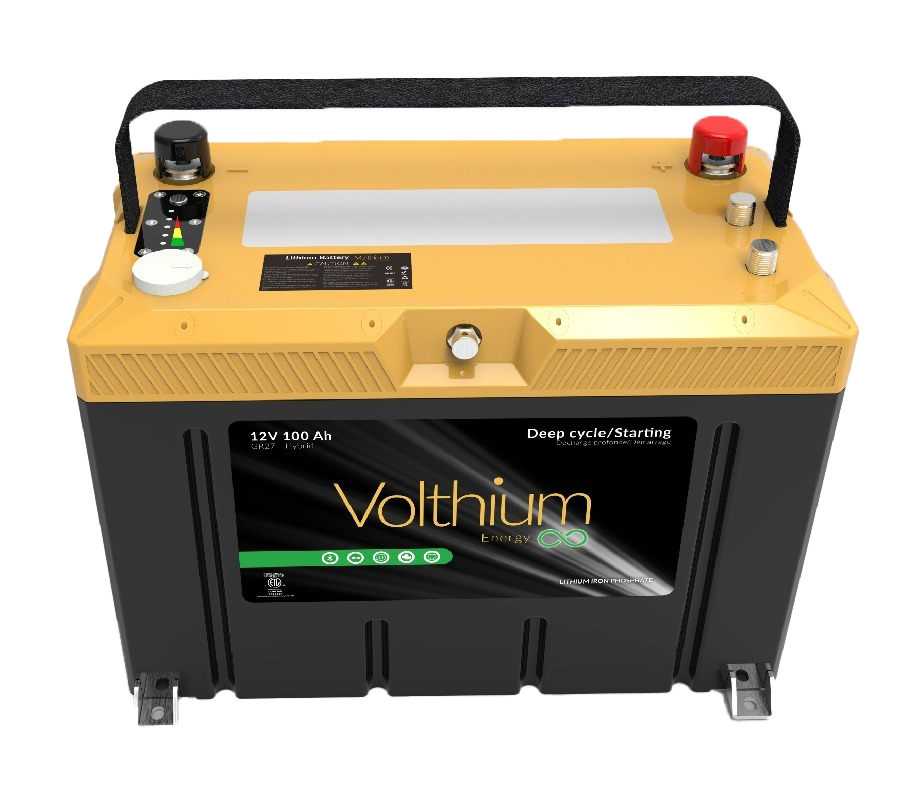STATE-OF-THE-ART LITHIUM BATTERIES
Lithium Battery for RV / Marine / Industrial / Solar
SECTORS ACTIVITIES DE VOLTHIUM
RECREATIONAL VEHICLES
RVs, trailers and vans
SOLAR STORAGE
Cottages and houses
NAUTICAL
Sailboats, boats, boating, trolling and kayaking
MEDICAL
Pharmacy, Medical Clinic, UPS System
Industrial
Boom lifts, pallet trucks, Semi-trailers and aviation

SUSTAINABLE ENERGY STARTS WITH OUR HIGH-PERFORMANCE LITHIUM BATTERIES
Volthium brings together the best components and brings them together in a single lithium battery. Choosing Volthium means ensuring that you have the best lithium cells in the industry thanks to its cell manufacturer recognized worldwide for its contribution to the automotive field. Similarly, the manufacturer of electronic parts and related components is famous for its contracts with the U.S. military and NASA.

OUR LITHIUM BATTERIES MOST POPULAR
VOLTHIUM IS ALL THAT!
2011
Founding the company
25
Employees
10 000+
Satisfied customers
THE FUTURE OF BATTERIES
LITHIUM
The future of lithium batteries looks exciting, as efforts to improve this critical technology are constantly evolving. Researchers and engineers are redoubling their efforts to address the challenges and exploit the full potential of lithium batteries.
One of the most promising breakthroughs lies in the development of of solid-state batteries. Unlike traditional batteries that use liquid electrolytes, solid-state batteries use solid electrolytes, making them safer, more effective, and more durable. Those batteries offer a higher energy density, allowing devices and vehicles to have a longer range without increasing the size of the batteries. Batteries. In addition, the batteries Solid-state are less sensitive to temperature changes, making them ideal for use in extreme environments such as Canada.



WHY CHOOSE LITHIUM?
5 X
More Lifespan
2 X
More energy
10 X
More Cycle
2.5 X
Lighter
4 X
Faster to load
2.5 X
More economical
400 %
More efficient
99 %
recyclable
Infinitely
Safer
VERSATILE PERFORMANCE,
OUR VOLTHIUM BATTERIES,
YOUR UNLIMITED POWER
Choosing Volthium means adopting a Canadian company, buying locally and having direct access to the manufacturer itself for optimal customer service. Each of our lithium batteries is custom-made, ruggedized and tested to meet the harsh Canadian environment. Volthium listens to consumers, allowing us to continuously develop new products in order to remain at the forefront of innovation and progress in the energy storage industry.
We are proud to offer high-performance, locally manufactured lithium batteries for a variety of applications that are a testament to the performance of our batteries.

THE ADVANTAGES OF CHOOSING VOLTHIUM
• High-end grade A+ cells (UL1973, UL1642)
• Integrated BMS, partnership with Texas Instrument
• Canadian engineering
• Full control of assembly quality
• Quebec-based customer service
Volthium brings together the best components and brings them together in a single lithium battery. In addition, Volthium has chosen a cell manufacturer that is recognized worldwide for its contribution to the automotive industry. Similarly, the manufacturer of electronic parts and related components is famous for its contracts with the U.S. military and NASA.
Lithium batteries have revolutionized the way we store and use energy. As we continue to look for ways to store energy more efficiently and safely, Volthium is bringing together the best components and bringing them together into a single LifePO4 lithium battery.
Lithium batteries are one of the most common energy storage technologies today, widely used in a variety of applications, from electric and recreational cars (RVs), water vehicles, solar storage banks, medical and industrial applications. The basic principle of their operation is the mobility of lithium ions between the two electrodes: the anode (negative electrode) and the cathode (positive electrode), via an electrolyte.
- Composition: Lithium batteries are typically made up of three main components: the anode, cathode, and electrolyte. The anode is usually composed of carbon, most often in the form of graphite. The cathode of LifePO4 batteries such as the ones we manufacture is made of lithium iron phosphate, iron phosphate promotes a strong molecular bond, which withstands extreme load conditions, extends service life, and maintains chemical integrity over many cycles. For other lithium batteries, the cathode is usually composed of a lithium metal compound, such as lithium cobalt, lithiated manganese, lithium nickel, or a mixture of these elements. The electrolyte is a chemical substance that allows lithium ions to pass between the anode and the cathode. At Volthium, we believe that LifePO4 batteries are the best alternative for different reasons.
- During charging: When the battery is charged, i.e. when the current is applied, the lithium ions move from the cathode to the anode via the electrolyte. During this process, lithium ions are “inserted” into the anode structure, a process called intercalation.
- During discharge: When the battery is used to power a device, i.e., when it is discharged, lithium ions move from the anode to the cathode, a process that releases energy. The mobility of lithium ions from the anode to the cathode is what generates the energy needed to power the device.
- Capacity and durability: The capacity of a lithium battery is determined by the amount of lithium it can store, which in turn determines how much energy it can provide. However, it is normal for the capacity of a battery to decrease over time, a phenomenon known as battery degradation. This is due to several factors, including temperature, overcharging and discharging, and general battery usage. However, thanks to the quality of our batteries and in particular our grade A+ cells, our batteries are guaranteed for 10 years and offer a lifespan of about 15 years.
LiFePO4 batteries, known for their lithium iron phosphate composition, are distinguished by their durability and superior energy capacity, especially in demanding applications such as recreational vehicles (RVs), trailers, and cottages. In Canada, where the search for reliable and sustainable energy solutions is constant, lithium LiFePO4 batteries are increasingly preferred over traditional lead-acid batteries, thanks to their long lifespan that can reach up to 3000 cycles at 100% discharge without significantly damaging the remaining capacity of the battery.
Volthium offers a range of 12V and 200Ah LiFePO4 batteries, equipped with grade A cells guaranteeing optimal efficiency. These batteries offer a shorter charging time and greater energy capacity, making the installation of a solar panel for energy storage even more cost-effective. Their high charge rate and stable voltage allow any electrical equipment to be efficiently powered, without the risk of overheating, thanks to the intrinsically safe lithium iron phosphate technology.
There are several types of lithium batteries, which are usually differentiated by the material used for the cathode (the positive electrode). The most common types are lithium cobalt (LiCoO2), lithium manganese (LiMn2O4), lithium nickel manganese cobalt (NMC), lithium nickel cobalt aluminum (NCA), and lithium iron phosphate (LiFePO4 or LFP) batteries. Volthium batteries are Iron Phosphate batteries known as LiFePO4 and LFP which are a kind of lithium-ion battery. They differ from other types of lithium batteries in their use of iron-phosphate for the cathode, rather than cobalt or nickel. They are said to have the following qualities:
- Safety and stability: LFP batteries are known for their safety and superior thermal stability. Compared to other types of lithium batteries, they are less likely to overheat or catch fire if malfunctioned or misused. This increased safety is due to the intrinsic stability of iron phosphate.
- Durability and life cycle: They also have a long service life and can maintain a high load capacity even after many charge and discharge cycles. They have a low self-discharge rate, which means they can hold their charge for long periods of time without use. Our products offer more than 6000 cycles and have a service life of about 15 years.
- Environmental performance: In comparison, LFP batteries have a potentially lower environmental impact. Iron is more abundant and less toxic than cobalt and nickel, and iron mining has a lower environmental impact. In addition, LFP batteries are easier to recycle than other types of lithium batteries.
Reducing our dependence on fossil fuels, improving air quality, managing e-waste more responsibly ; Lithium batteries have had a significant positive impact on the environment, playing a critical role in the transition to a cleaner and more sustainable society. Their increasing adoption in various areas, such as electric vehicles and renewable energy storage, has helped to significantly reduce greenhouse gas emissions from transportation and power generation.
Lithium battery recycling has also become more efficient, allowing valuable materials such as lithium, cobalt, and nickel to be recovered and reused in new batteries or other applications.
Access the full FAQ.

